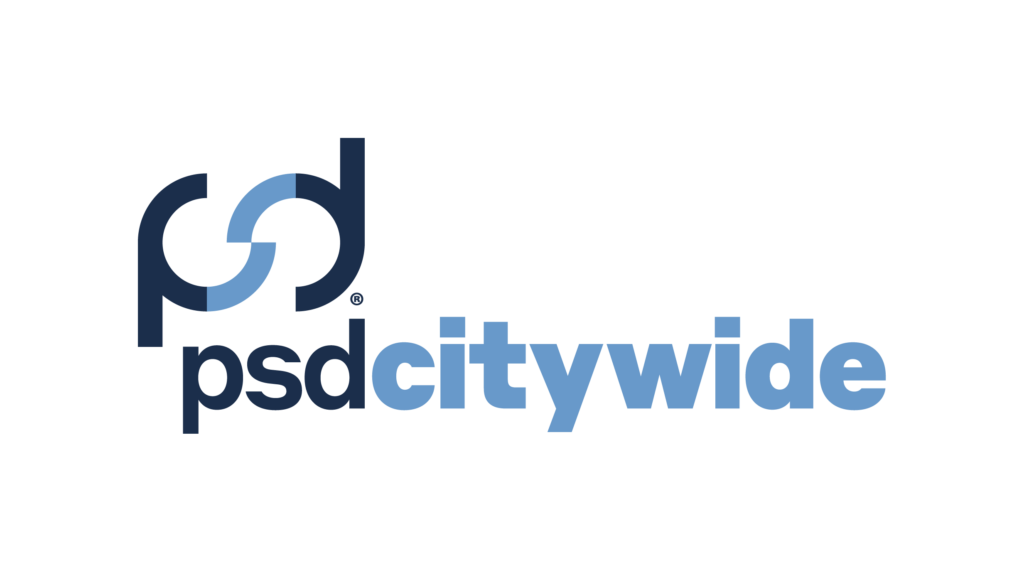Local governments in British Columbia face growing financial pressure as infrastructure demands increase, senior levels of government continue to download responsibilities on to them and local industrial tax bases shrink. As a result, the ability to fund infrastructure requirements and obtain and secure amenities has become increasingly important for local governments, especially those in high growth areas of the province.
With limited own-source revenue streams (e.g. property taxes, sale of services), local governments must consider innovative ways to use their capital finance tools and must actively explore opportunities for diversifying their revenue sources to ensure infrastructure demands are met, affordable housing is supplied and their communities remain viable and sustainable. Below, we consider a few options local governments may wish to consider, including grant funding, development financing tools and the possibility of obtaining community benefits through social procurement.
Grant Funding
In recent years, we have seen a surge of capital projects being developed around the province, thanks to funding from federal and provincial levels of governments. Many of these projects are allowing high-value investments to be made to public infrastructure such as drinking water systems and wastewater treatment facilities which may otherwise be unfeasible without grant funding, especially for small and rural communities.
A variety of funding programs operate from time to time, and each will have its own objectives, eligibility criteria and compliance requirements. For example, some may only be available for capital investments while others may only finance research in innovative areas. Many are focused on specific target areas such as water/wastewater, climate change, asset management and public transportation. Most programs restrict the use of funding for leasing, land purchases, repair and maintenance, certain professional costs such as legal and accounting, and costs incurred before the project has been approved for funding.
At the provincial level, grant funding is administered under the Local Government Grants Act (LGGA). The types of grants covered by the LGGA fall within two broad categories: unconditional grants and conditional grants. The former are application based programs that stipulate deadlines and require recipients to meet certain reporting requirements. The latter comprises three broad subcategories: water/wastewater projects and transportation projects, both of which provide a maximum of 50 percent funding for project implementation, and “other” projects which provide up to 100 percent funding.
The Gas Tax Fund (GTF) is an essential funding source for British Columbia local governments as it provides a regular and predictable flow of funding for all local governments, without a competitive application process. In British Columbia, the GTF is administered under an agreement between the Union of BC Municipalities and the federal and provincial
governments and the funds are used for municipal infrastructure and related projects.
The money in the GTF is intended to be used towards environmentally sustainable infrastructure, including water and wastewater projects, community energy systems, public transit and other eligible forms of capital infrastructure. One limitation of the GTF program is that funds cannot be used on operational requirements.
Development Financing
Financing growth-related infrastructure presents unique challenges for local governments. Not
only do senior government infrastructure grant programs assign a low priority to growth-related works, but also taxpayers are generally not prepared to contribute to infrastructure which is required by development.[1]
Where the grant funding is not available to fund or subsidize the provision of or upgrades to critical service infrastructure, local governments can use their statutory tools to either share or shift funding risks to the development community. In British Columbia, there are several tools local governments can use to achieve this end. A few of these are as follows:
Excess or Extended Services/Latecomer Charges
Under the Local Government Act (LGA), local governments may require developers to provide excess or extended services (highway, water, sewer, drainage) to service land other than the land being subdivided or developed. Where the costs to provide all or part of these services is considered by the local government to be “excessive”, the developer can be required to bear such costs. The local government must then determine what proportion of the excess or extended services benefits other lands, charge those benefitting parcels the “latecomer charges” and then remit such payments to the developer that provided the services. The maximum term for the imposition of latecomer charges is 15 years. This tool is typically used for greenfield sites, where the developer wishes to build out of sequence and has the financial capacity to front-end the works.
Development Works Agreements
The LGA also permits local governments and developers to enter into development works agreements for the provision of sewage, water, drainage and highway facilities and the improvement of park land. Under such agreements, local governments and developers can be responsible for financing all or a portion of infrastructure costs. Such costs are then recouped through the local government’s imposition of a one-time charge on the property owners within the benefitting “development works area.” As with the imposition of excess or extended services, this tool is typically used for greenfield sites, where the developer wishes to build out of sequence and has the financial capacity to front-end the works.
However, unlike the imposition of latecomer charges to recover the costs of excess or extended services, there is no maximum term imposed for which charges may be collected from benefiting users. While this may provide more comfort to developers from a cost recovery perspective, it is important to note that such agreements require the “blessing” of the electors, as per section 570 of the LGA.
Development Cost Charges (DCCs)
Another common tool used by local governments to fund infrastructure costs are DCCs. DCCs are typically imposed on developers to compensate local governments for the capital costs of providing, constructing, altering or expanding sewage, water, drainage and highway facilities (other than off-street parking facilities) and providing and improving park land. This tool is often used where such infrastructure is deemed to benefit both growth and existing populations and may be beneficial in communities where the development community is not willing or financially capable of front-ending major capital infrastructure.
Setting DCC rates is a critical exercise for local governments, as an imbalance may discourage development that could otherwise provide community amenities, affordable housing, or reasonably priced serviced land (factors which must be considered by local governments when setting rates). DCCs may also be riskier where a local government front-ends services, because if development does not proceed as projected, then the local government may not recover all of the costs incurred.
Density Bonusing
Local governments also have the authority to secure amenities through statutorily authorized density bonus zoning schemes. For example, zoning bylaws may be drafted to include the option of additional (bonus) density subject to specific conditions, which can include the provision of amenities. This approach is intended to provide options for the developer to build either to the “base” density or, at the developer’s option, to higher levels of density, if the developer provides certain amenities or affordable housing, or meet other special conditions.
Phased Development Agreements
Another creative tool available under the LGA is the phased development agreement (PDA). The PDA provisions under the LGA permit local governments to enter into PDAs with developers to exchange zoning and subdivision servicing certainty for amenities and other development features. The effect of the PDA provisions is to grandfather a phased development project against changes to the specified zoning provisions or specified subdivision servicing provisions while the PDA is in effect. Because a PDA effectively fetters a council’s discretion with respect to its zoning and subdivision servicing bylaws, a PDA must be adopted by bylaw and is subject to a public hearing requirement. The maximum term of a PDA is 10 years (20 with approval of Inspector of Municipalities).
PDAs may be beneficial to developers of largescale developments or greenfield sites that will be built out over a long period of time. While the primary intent of a PDA is to preserve development rights for developers, the PDA provisions are also advantageous to local governments because they provide explicit statutory authority to exchange amenities to address the impacts of development. Thus, a PDA provides a lawful alternative to acquiring amenities through the density bonusing provisions of the LGA or through a non-statutory community amenity contribution scheme (discussed below).
Community Amenity Contributions (CACs)
CACs are voluntary amenity contributions agreed to by the developer and local government as part of a rezoning process and can take several forms, including community amenities, affordable housing, financial contributions toward infrastructure that cannot be obtained through DCCs (i.e. recreation facilities, fire halls, childcare spaces, etc.). While there is no express statutory authority authorizing CACs, the process typically occurs through voluntary negotiations during the rezoning process.
CAC schemes, density bonusing and PDAs are all important tools to enable local governments to address certain impacts of new growth that cannot otherwise be offset through other development financing tools. As indicated above, DCCs may be imposed to pay for allowable capital items, such as water and sewer mains, drainage and certain highway facilities, but they may not be imposed to acquire other community amenities, such as recreation facilities, community centres, childcare facilities etc. Further, DCCs cannot be used to fund other “quality of life” amenities that may mitigate the negative effects of development on a community, such as public art, public plazas, greenways etc.
Social Procurement Opportunities
Another innovative and creative tool worthy of consideration is the use of social procurement to obtain community benefits. Social procurement refers to the practice of leveraging public spending on goods and services to generate positive social outcomes.
While the articulation of social procurement may be recent, the general practice is not. As awareness within society has grown on the potential negative impacts of purchasing decisions, other factors have filtered into the decision-making process, beyond simply being an exchange of economic value.
For instance, local governments have long been valuing the use of sustainable building products in construction when making spending decisions or considering a vendor’s environmental stewardship when making their purchasing choices. The extension of this practice into the social realm simply marks another progression in the evolution of procurement practices. Given that local governments spend millions of dollars annually on operational and capital spending, it seems sensible to harness even a small proportion of this value in the form of social improvements for their communities.
Local governments that are considering the adoption of social procurement practices are recommended to take a methodical and principled approach to developing policy and practices tailored to their community’s needs rather than adopting a “shelf-ready” practice.
To that end, local governments should firstly consider the overarching objectives they wish to achieve by implementing social procurement within their organization’s purchasing practices. For one community this may mean access to more public spaces or public art, for another it may be opportunities for employment training for vulnerable groups within their community. Once the objectives have been defined, the task moves to establishing policy and procedures, developing supporting procurement documents, and ensuring that adequate training is provided to key members of staff, particularly for those directly responsible for conducting procurement, undertaking evaluations and authorizing purchases.
Conclusion
Local governments have a limited number of statutory tools available to them to pursue funds for necessary infrastructure and to secure amenities for their communities. How and when these tools are used requires a delicate balance between achieving a sustainable growth for the community and maintaining its affordability. Where reliance on these tools is not feasible – or not preferable – local governments may need to consider options outside of the statutory toolbox to realize their objectives. This may involve sourcing government funding, particularly in the case of large-value capital projects, or it may entail the use of creative procurement strategies that oblige vendors to deliver social value to the community in conjunction with the delivery of procured projects. Ultimately, the funding approaches pursued by a local government will be a reflection of the community’s strategic priorities and capacity for innovation.
PAM JEFCOAT is a lawyer practising in the areas of local government and commercial real estate law. Pam holds a master’s degree in Public Administration and provides advice on a wide variety of local government matters, with a focus on land use planning and development.
SONIA SAHOTA is a lawyer and non-practicing professional engineer focussing in the areas of procurement, construction and land development. Pam and Sonia are the founding partners of Civic Legal LLP, a Vancouver law firm specializing in local government, commercial real estate development, procurement and construction law.



